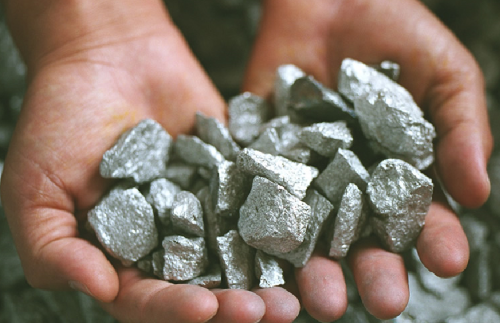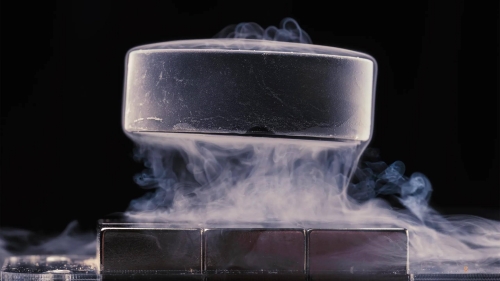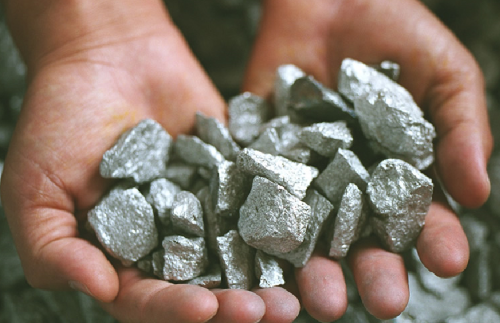Niobium-Contained Superconducting Materials and Their Applications

Niobium and Niobium Alloys Basics
--What Is Niobium?
Niobium is a lustrous, gray, ductile metal with the atomic number 41 and symbol Nb. It is highly resistant to corrosion, has a high melting point (about 2,468 °C), and exhibits excellent superconducting properties at cryogenic temperatures. Naturally found in minerals like columbite and pyrochlore, niobium is typically extracted through complex refining processes. When alloyed with other metals, particularly steel, it significantly enhances strength and toughness without adding much weight.
Further reading: 10 Important Uses of Niobium

--What Are the Key Applications of Niobium?
Niobium’s unique properties make it essential in a wide range of industries:
- Steel Industry: Added in small amounts to produce high-strength, low-alloy (HSLA) steels used in pipelines, automotive components, and structural frameworks.
- Superconductors: Niobium-titanium (NbTi) and niobium-tin (Nb₃Sn) alloys are key materials in superconducting magnets for MRI machines, particle accelerators, and fusion reactors.
- Aerospace and Jet Engines: Niobium alloys withstand extreme temperatures, making them ideal for turbine blades and rocket nozzles.
- Electronics and Optics: Used in capacitors, lenses, and coatings due to its dielectric and corrosion-resistant qualities.
- Medical Implants: Biocompatible and non-toxic, niobium is used in surgical implants and prosthetics.

Key Niobium-Based Superconductors
1. Niobium-Titanium (NbTi)
Discovered in the 1960s, NbTi is a ductile, easily manufactured alloy that becomes superconducting below 9.2 K. Its exceptional mechanical strength and stability in high magnetic fields make it the most widely used superconducting material today.
NbTi is the primary choice for producing superconducting wires in:
- Magnetic Resonance Imaging (MRI) machines
- Particle accelerators (e.g., Fermilab, CERN’s LHC)
- Fusion reactors like ITER
For instance, the Large Hadron Collider (LHC) at CERN uses approximately 1,200 tons of NbTi superconducting wire, cooled to 1.9 K with superfluid helium to generate magnetic fields up to 8.3 Tesla. This allows protons to be accelerated to nearly the speed of light for collision experiments.
Over 100 million MRI scans are performed annually worldwide. Almost every MRI scanner uses NbTi-based magnets, where the material’s mechanical flexibility and superconducting stability are critical for producing uniform magnetic fields.
2. Niobium-Tin (Nb₃Sn)
Nb₃Sn is an intermetallic compound that exhibits superconductivity at a higher critical temperature (~18 K) and in stronger magnetic fields than NbTi. However, it is more brittle and requires careful fabrication.
It is essential in applications demanding higher performance, such as:
- High-field research magnets
- Next-generation fusion experiments
- Compact superconducting cyclotrons
ITER, the world’s largest experimental fusion reactor, uses over 600 tons of Nb₃Sn in its toroidal field magnets. These magnets produce 11.8 Tesla fields to confine plasma at over 150 million °C. The conductor must withstand high radiation and electromagnetic stresses for decades.
You can also find it in scientific Use. Nb₃Sn is used in 900 MHz NMR spectrometers for ultra-high-resolution molecular analysis in pharmaceuticals and structural biology, where stable fields above 21 T are required.
3. Niobium Nitride (NbN)
NbN is a ceramic-like superconducting compound with a critical temperature of around 16 K. It is widely used in superconducting electronics, especially in fields requiring high-speed and high-frequency detection, due to its short coherence length and fast response time.
NbN is used in:
- Superconducting nanowire single-photon detectors (SNSPDs)
- Submillimeter-wave telescopes (e.g., Herschel, Heinrich Hertz Telescope)
- Superconducting quantum interference devices (SQUIDs)
Superconducting Nanowire Single-Photon Detectors (SNSPDs) made with NbN achieve >90% detection efficiency for infrared photons and picosecond timing resolution. These devices are essential in quantum key distribution (QKD) systems and experiments requiring ultra-low-light sensitivity.
The Herschel Space Observatory and Heinrich Hertz Telescope both rely on NbN-based detectors to observe cold regions of space at submillimeter wavelengths (e.g., 500–800 GHz), uncovering phenomena like early star formation and molecular clouds.
4. Pure Niobium (Nb)
Elemental niobium is itself a superconductor with a critical temperature of 9.3 K. Thanks to its high purity and excellent thermal conductivity, it is used in specialized applications including:
- Superconducting radio-frequency (SRF) cavities for particle accelerators
- Quantum computing components
- Low-temperature sensor systems
Superconducting Radio-Frequency (SRF) cavities made from ultra-pure niobium are used in accelerators like SLAC and European XFEL, where high-gradient acceleration is needed with minimal power loss. SRF cavities typically operate at 2 K and accelerate particles with gradients exceeding 20 MV/m.
Looking Ahead: Innovation in Superconductivity
Despite growing interest in high-temperature superconductors (HTS) like YBCO and BSCCO, niobium-based materials remain dominant for practical applications due to their:
- Lower fabrication costs
- Long-term reliability
- Well-understood cryogenic infrastructure
Recent advances in materials science, including coated conductors, nanostructuring, and hybrid materials, are expected to enhance the properties of existing niobium-based superconductors even further.
Conclusion
Niobium-contained superconducting materials have shaped the modern landscape of science and technology. From MRI machines to particle colliders and quantum sensors, these materials offer a unique blend of electrical, mechanical, and thermal properties. For more information, please visit Advanced Refractory Metals (ARM).
{{item.content}}
LEVE A REPLY
{{item.children[0].content}}
{{item.content}}






